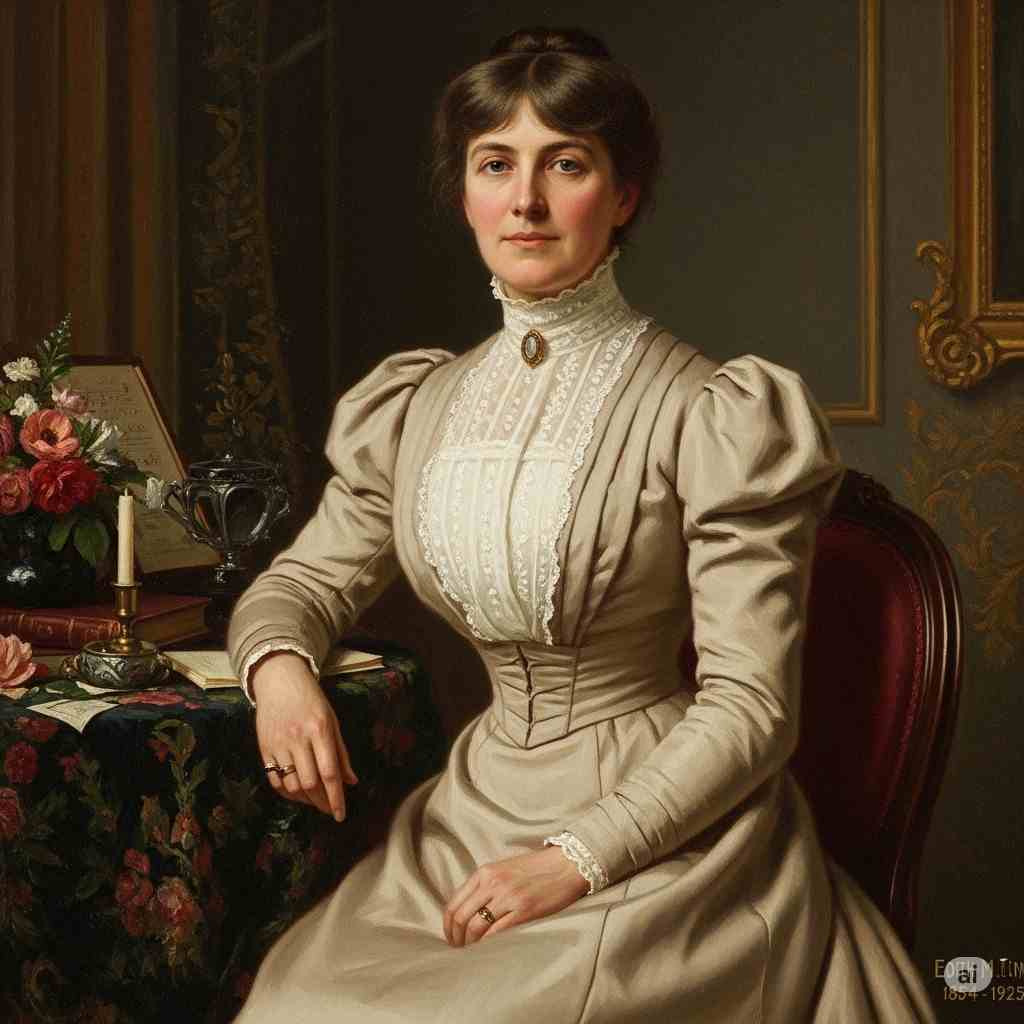Vos Non Vobis
Edith M. Thomas
1854 to 1925

There was a garden planned in Spring’s young days,
Then Summer held it in her bounteous hand,
And many wandered through its blooming ways,
But ne’er the one for whom the work was planned.
And it was vainly done—
For what are many, if we lack the one?
There was a song that lived within the heart
Long time—and then on Music’s wing it strayed!
All sing it now, all praise its artless art,
But ne’er the one for whom the song was made.
And it was vainly done—
For what are many, if we lack the one!
Edith M. Thomas's Vos Non Vobis
Edith M. Thomas’s "Vos Non Vobis" explores themes of unfulfilled desire, personal loss, and the tension between communal appreciation and personal connection. The Latin phrase "Vos Non Vobis," roughly translating to "for you, not for yourselves," often references labor done for others without personal gain, setting a tone of selfless devotion that is central to Thomas's poem. Through the metaphor of a garden and a song, Thomas captures the quiet sorrow of creating beauty that reaches many but misses its intended recipient, thus failing to fulfill its creator's true purpose.
Structure and Form
The poem consists of two six-line stanzas, each with an ABABCC rhyme scheme. This regularity reinforces a sense of order and purpose, almost mirroring the methodical effort behind both the garden and the song. The final couplet in each stanza serves as a refrain that reiterates the poem’s central theme: the futility of labor when its purpose remains unfulfilled. The repetition of the line “For what are many, if we lack the one?” serves to emphasize the personal void left even in the face of public admiration or praise.
First Stanza: The Garden as a Metaphor for Unfulfilled Purpose
In the first stanza, Thomas introduces the metaphor of a garden, which represents a labor of love. This garden is “planned in Spring’s young days,” suggesting not only youth and vitality but also an initial optimism. Spring, a season associated with hope and beginnings, aligns with the speaker’s early aspirations. The mention of “Summer” holding the garden in her “bounteous hand” conjures images of growth and fulfillment, suggesting that the garden has reached its peak. Yet, this flourishing is bittersweet; “many wandered through its blooming ways” indicates that the garden is admired by others, but “ne’er the one for whom the work was planned” has seen it. The intended recipient of the garden’s beauty, perhaps a beloved, remains absent.
The line “And it was vainly done—” encapsulates the poem’s pathos, highlighting the speaker’s sense that the garden’s success in attracting “many” is insufficient. Thomas here questions the value of universal admiration when the “one” is absent, revealing an intimate sorrow that the communal cannot remedy the personal.
Second Stanza: The Song as a Symbol of Lost Intention
The second stanza shifts from the physical to the abstract, introducing the metaphor of a song, which is “a song that lived within the heart / Long time.” This song represents an inner emotion or experience—perhaps an expression of love or personal truth—that the speaker eventually shares. When it takes “Music’s wing,” the song becomes public, leaving the private sphere and entering the domain of shared culture, where “all sing it now, all praise its artless art.” While “artless art” suggests a genuine and heartfelt creation, its widespread reception feels hollow to the speaker. The line “But ne’er the one for whom the song was made” mirrors the first stanza’s sentiment, emphasizing that while many can appreciate this creation, its true purpose is thwarted by the absence of the intended listener.
The stanza concludes with a similar refrain, “And it was vainly done— / For what are many, if we lack the one!” This rhetorical question underscores the futility of universal praise when it cannot fulfill a personal longing. The “one” is an irreplaceable figure, someone whose recognition or presence holds singular significance that no collective admiration can substitute.
Conclusion: The Value of the Individual in Creative Purpose
Through the imagery of the garden and the song, Thomas meditates on the notion that creations meant for a specific person lose their intrinsic purpose if that person remains distant. Both stanzas explore the emotional cost of creativity that finds an unintended audience. In a broader sense, Vos Non Vobis reflects on the nature of art and beauty as inherently personal endeavors, where the worth of a creation is deeply tied to its audience. The poem suggests that, while the appreciation of many can bring a form of validation, it is not a substitute for the unique fulfillment derived from sharing one’s heart with a single, beloved other.
In "Vos Non Vobis," Thomas reveals that even widely acclaimed works of beauty—whether a blossoming garden or a heartfelt song—can feel hollow without the presence of the one who inspired them. The poem thereby elevates the significance of individual connection over collective admiration, offering a poignant reminder that in matters of the heart, “the many” cannot replace “the one.”
This text was generated by AI and is for reference only. Learn more
Want to join the discussion? Reopen or create a unique username to comment. No personal details required!



Comments
No comments yet. Be the first to comment!